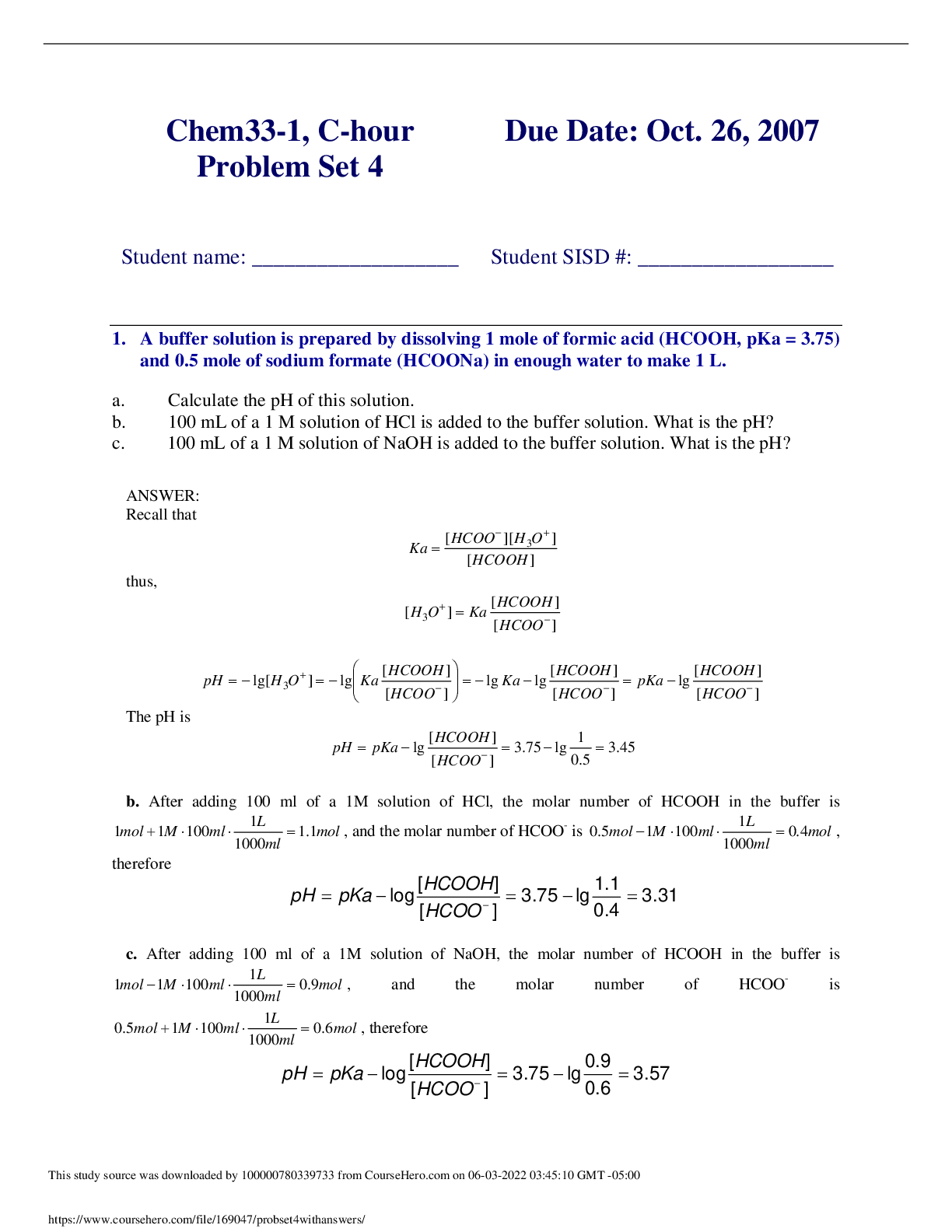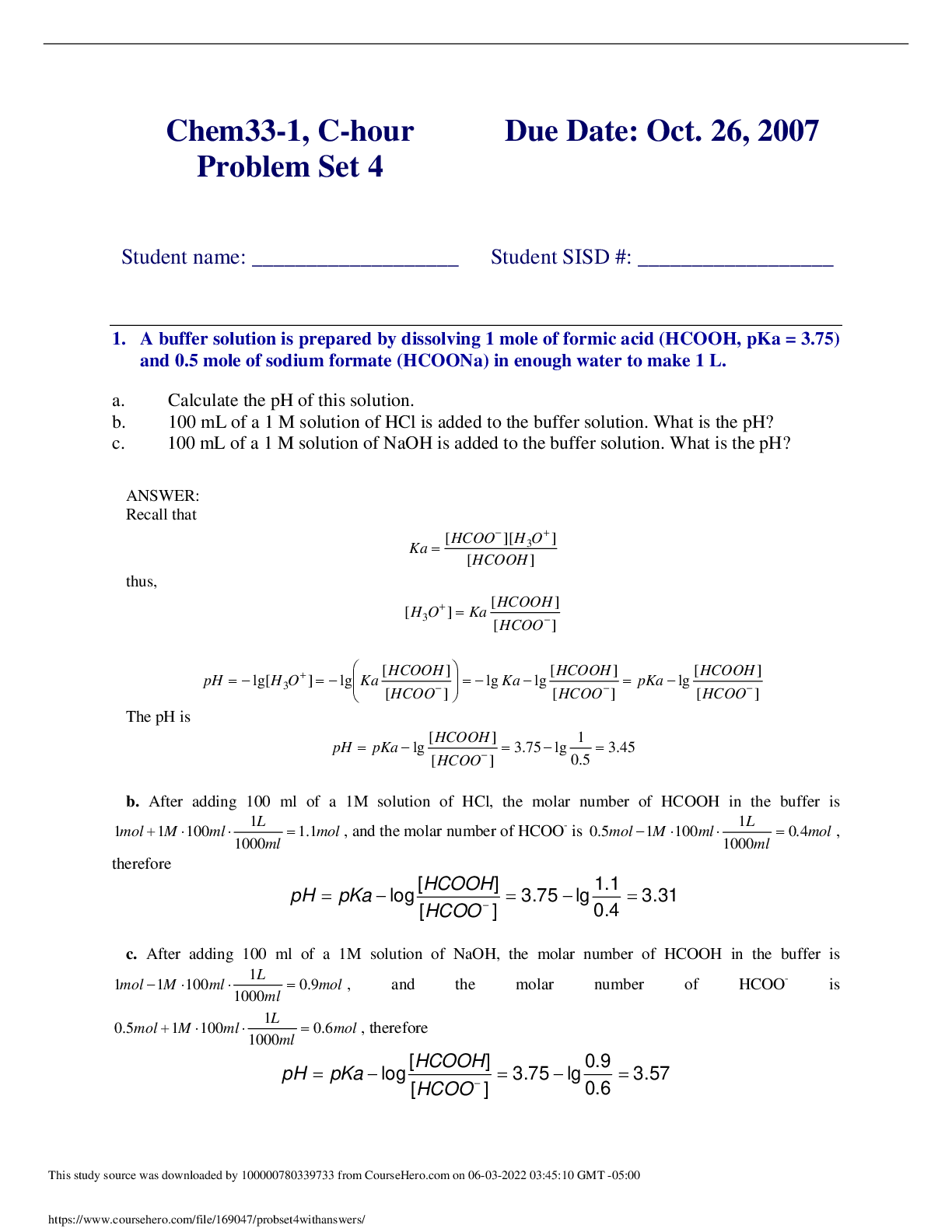Chem33-1, C-hour Problem Set 4
Course
English
Subject
Chemistry
Category
Questions and Answers
Pages
7
Uploaded By
ATIPROS
Preview 2 out of 7 Pages


Download all 7 pages for $ 6.00
Reviews (0)
$6.00
